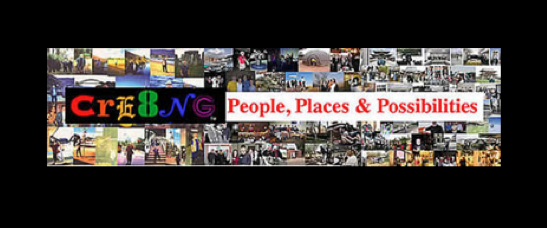This Week's Guest Article:
This was written by a professional speaker friend in Hawaii Loren Ekroth.
HOW TO BECOME A PEOPLE MAGNET What makes a person so attractive that people are
magnetically drawn to them? Think of people
you are drawn to, that you like to be around.
What makes them such people magnets?
Of course, physical attractiveness helps, as
does celebrity. But for most of us who are
neither physical "10s" or famous, we can still
become highly attractive to others. Here's how:
SHOW GENUINE INTEREST IN OTHERS
This behavior is in relatively short supply because
so many people are self-centered or self-absorbed,
more interested in how they are being seen than
in others. Because most humans get great
satisfaction from others' interest in them, when
you bestow your interest on others, they like
being around you. Everyone has a story to tell.
Be curious and listen to their story.
Being curious is within your control. Remember
the interpersonal style of the TV detective Columbo
played by Peter Falk? Express genuine interest.
He showed a non-intrusive curiosity that even
suspects were willing to respond to. When you
ask questions sincerely and gently, you'll learn a
lot, and others will be honored that you want to
know about them and their ideas.
BE EASY TO BE WITH
Have a light touch, and don't take yourself too
seriously. Avoid being touchy - cactussy -
with lots of judgments and stern opinions.
Don't be argumentative trying to be right.
Be generous with compliments and open
to others' points of view.
(These behaviors are also within your control.)
HAVE A GOOD SENSE OF HUMOR
Humor doesn't require you to have a stash of jokes
to tell. (Joke-telling makes YOU, not them, the center
of attention). Instead, humor involves being able to
see the lighter side of life, to laugh at the foibles
of humanity, and to acknowledge the silly side
of yourself. Overly-serious people can be a drag,
as you know. Don't be one of them.
BE AN ARTESIAN WELL OF INFORMATION
Be a person "in the know." Be aware of practical
stuff ("Where can I get a good deal on a bedroom
set?") as well as people ("Talk to George about
that tech problem; he's a real maven about
computing.") You can become a "hub" among
people who will value you as one who knows
many others in some depth.
If we remain narrowly interested in only a few subjects
and not widely knowledgeable, it's more difficult to talk
about the many interests of people we meet. Being
a narrow specialist can make us a bore. Be a generalist.
DON'T BE A KNOW-IT-ALL
Even if you know a lot, don't be a smart-ass.
Being knowledgeable helps you relate to others,
but not if you use your knowledge to show off,
one-up others, and try to have the last word.
Hold your knowledge lightly and don't feel com-
pelled to always share what you know. Social
wisdom requires discernment of when to speak
and when to remain silent. (This is especially true
when we're with children or young people.)
Carry your knowledge with some humility.
Dr. Loren Ekroth is a speaker and international expert on conversation who publishes his "Better Conversations" ezine each Tuesday. Rich resources and f*ree subscription
available at his site, http://www.conversation-matters.com" (Highly recommended.)




